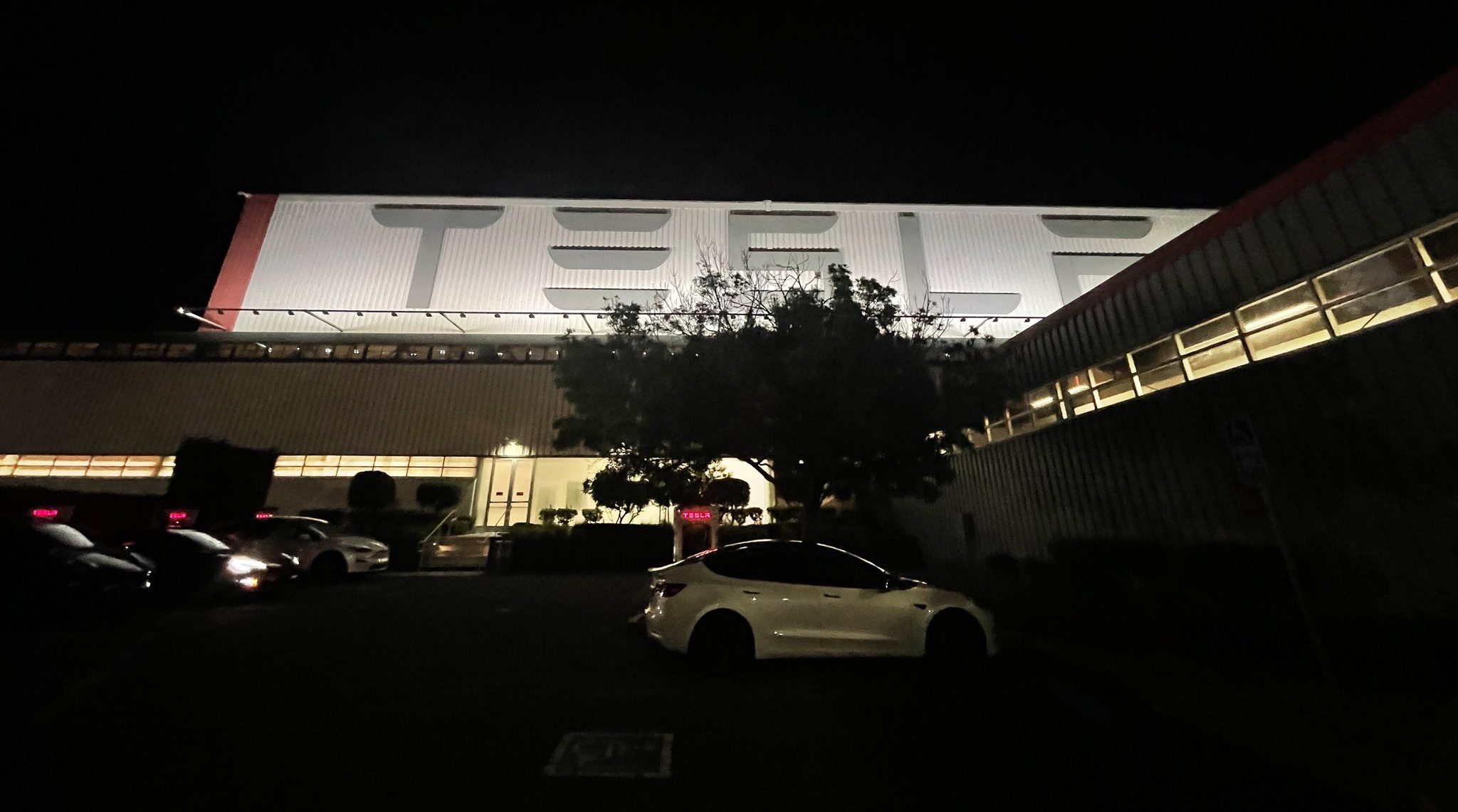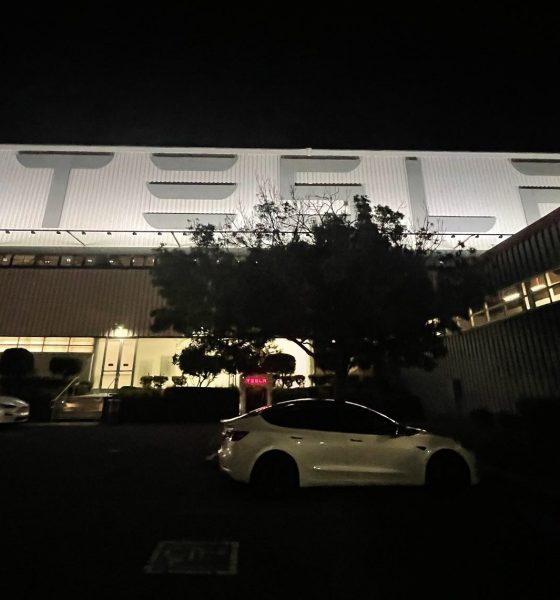

Investor's Corner
Tesla (TSLA) stock gets upgraded to “Outperform” at RBC Capital Markets
Tesla stock (NASDAQ:TSLA) may be feeling some pressure on Monday’s intraday, but the electric vehicle maker actually received a rather optimistic outlook from RBC Capital Markets. In recent comments, analyst Joseph Spak raised his rating for Tesla from “Perform” to “Outperform,” though he lowered his price target from $1,175 to $1,100 per share.
It’s not only Tesla that is seeing some pressure today. The broader markets also seem poised to fall sharply over fears related to inflation and the possibility of a recession. Tesla stock, for its part, has declined over 30% this year amid Covid-19-related challenges in China and Elon Musk’s efforts to acquire social media platform Twitter.
According to RBC Capital Markets analyst Joseph Spak, however, Tesla’s second-quarter margins could surprise as investors are already primed for lower delivery figures. So far, analysts polled by Factset are expecting Tesla to deliver about 287,000 vehicles in Q2 2022. That’s quite a bit lower than the company’s results in the first quarter, when Tesla delivered over 310,000 vehicles from January to March 2022.
The following are Spak’s comments:
“Near-term set-up seems favorable. Visible Alpha 2Q22 consensus delivery forecast is 279k units, though we believe the buyside expects a ~250k print effectively in line with our new 249k forecast. With investors primed for lower deliveries, we believe 2Q22 margins can surprise to upside.
“1Q22 auto GM ex-credits was 30% and walking q/q lower volume, higher depreciation weigh, but pricing can offset (see our walk inside). We forecast 2Q22 auto GM ex-credits at ~28.6%. Visible Alpha consensus 2Q22 auto gross margins ex-credits is 26.4%, but that is also built on that 279k unit forecast which is likely to come down.”
“So we see the potential for low margin expectations and hence a margin beat. Looking ahead, we are positive as well. For 3Q22, RBC i s at 396k deliveries vs. consensus at 378k, and we see 2H22 auto gross margins >30% as Shanghai gets back to pace, Berlin and Texas ramp, and pricing gains continue,” the analyst noted.
RBC credited Tesla’s efforts to secure critical materials that it would need to ramp its operations to a significant scale. The firm also cited Elon Musk’s Master Plan Part 3, which seems focused on scaling Tesla to such a degree that it could have a notable effect on the world as a whole.
“(Tesla’s) early focus on vertical integration (not just batteries/raw materials but also motors, semis, software) is likely to pay off especially as industry supply of critical materials may become an issue in 2027/28 and TSLA may be able to control more of their own destiny.
“Indeed, it appears Elon’s Master Plan Part 3 is likely to focus on achieving very large scale to shift the transportation/energy infrastructure. TSLA earnings and cash generation over the coming years, in addition to their ability to use their stock as currency, can help them build out and secure materials giving them a strong competitive advantage,” RBC noted.
Don’t hesitate to contact us with news tips. Just send a message to simon@teslarati.com to give us a heads up.

Investor's Corner
Tesla stock closes at all-time high on heels of Robotaxi progress

Tesla stock (NASDAQ: TSLA) closed at an all-time high on Tuesday, jumping over 3 percent during the day and finishing at $489.88.
The price beats the previous record close, which was $479.86.
Shares have had a crazy year, dipping more than 40 percent from the start of the year. The stock then started to recover once again around late April, when its price started to climb back up from the low $200 level.
This week, Tesla started to climb toward its highest levels ever, as it was revealed on Sunday that the company was testing driverless Robotaxis in Austin. The spike in value pushed the company’s valuation to $1.63 trillion.
Tesla Robotaxi goes driverless as Musk confirms Safety Monitor removal testing
It is the seventh-most valuable company on the market currently, trailing Nvidia, Apple, Alphabet (Google), Microsoft, Amazon, and Meta.
Shares closed up $14.57 today, up over 3 percent.
The stock has gone through a lot this year, as previously mentioned. Shares tumbled in Q1 due to CEO Elon Musk’s involvement with the Department of Government Efficiency (DOGE), which pulled his attention away from his companies and left a major overhang on their valuations.
However, things started to rebound halfway through the year, and as the government started to phase out the $7,500 tax credit, demand spiked as consumers tried to take advantage of it.
Q3 deliveries were the highest in company history, and Tesla responded to the loss of the tax credit with the launch of the Model 3 and Model Y Standard.
Additionally, analysts have announced high expectations this week for the company on Wall Street as Robotaxi continues to be the focus. With autonomy within Tesla’s sights, things are moving in the direction of Robotaxi being a major catalyst for growth on the Street in the coming year.
Elon Musk
Tesla needs to come through on this one Robotaxi metric, analyst says
“We think the key focus from here will be how fast Tesla can scale driverless operations (including if Tesla’s approach to software/hardware allows it to scale significantly faster than competitors, as the company has argued), and on profitability.”

Tesla needs to come through on this one Robotaxi metric, Mark Delaney of Goldman Sachs says.
Tesla is in the process of rolling out its Robotaxi platform to areas outside of Austin and the California Bay Area. It has plans to launch in five additional cities, including Houston, Dallas, Miami, Las Vegas, and Phoenix.
However, the company’s expansion is not what the focus needs to be, according to Delaney. It’s the speed of deployment.
The analyst said:
“We think the key focus from here will be how fast Tesla can scale driverless operations (including if Tesla’s approach to software/hardware allows it to scale significantly faster than competitors, as the company has argued), and on profitability.”
Profitability will come as the Robotaxi fleet expands. Making that money will be dependent on when Tesla can initiate rides in more areas, giving more customers access to the program.
There are some additional things that the company needs to make happen ahead of the major Robotaxi expansion, one of those things is launching driverless rides in Austin, the first city in which it launched the program.
This week, Tesla started testing driverless Robotaxi rides in Austin, as two different Model Y units were spotted with no occupants, a huge step in the company’s plans for the ride-sharing platform.
Tesla Robotaxi goes driverless as Musk confirms Safety Monitor removal testing
CEO Elon Musk has been hoping to remove Safety Monitors from Robotaxis in Austin for several months, first mentioning the plan to have them out by the end of 2025 in September. He confirmed on Sunday that Tesla had officially removed vehicle occupants and started testing truly unsupervised rides.
Although Safety Monitors in Austin have been sitting in the passenger’s seat, they have still had the ability to override things in case of an emergency. After all, the ultimate goal was safety and avoiding any accidents or injuries.
Goldman Sachs reiterated its ‘Neutral’ rating and its $400 price target. Delaney said, “Tesla is making progress with its autonomous technology,” and recent developments make it evident that this is true.
Investor's Corner
Tesla gets bold Robotaxi prediction from Wall Street firm
Last week, Andrew Percoco took over Tesla analysis for Morgan Stanley from Adam Jonas, who covered the stock for years. Percoco seems to be less optimistic and bullish on Tesla shares, while still being fair and balanced in his analysis.

Tesla (NASDAQ: TSLA) received a bold Robotaxi prediction from Morgan Stanley, which anticipates a dramatic increase in the size of the company’s autonomous ride-hailing suite in the coming years.
Last week, Andrew Percoco took over Tesla analysis for Morgan Stanley from Adam Jonas, who covered the stock for years. Percoco seems to be less optimistic and bullish on Tesla shares, while still being fair and balanced in his analysis.
Percoco dug into the Robotaxi fleet and its expansion in the coming years in his latest note, released on Tuesday. The firm expects Tesla to increase the Robotaxi fleet size to 1,000 vehicles in 2026. However, that’s small-scale compared to what they expect from Tesla in a decade.
Tesla expands Robotaxi app access once again, this time on a global scale
By 2035, Morgan Stanley believes there will be one million Robotaxis on the road across multiple cities, a major jump and a considerable fleet size. We assume this means the fleet of vehicles Tesla will operate internally, and not including passenger-owned vehicles that could be added through software updates.
He also listed three specific catalysts that investors should pay attention to, as these will represent the company being on track to achieve its Robotaxi dreams:
- Opening Robotaxi to the public without a Safety Monitor. Timing is unclear, but it appears that Tesla is getting closer by the day.
- Improvement in safety metrics without the Safety Monitor. Tesla’s ability to improve its safety metrics as it scales miles driven without the Safety Monitor is imperative as it looks to scale in new states and cities in 2026.
- Cybercab start of production, targeted for April 2026. Tesla’s Cybercab is a purpose-built vehicle (no steering wheel or pedals, only two seats) that is expected to be produced through its state-of-the-art unboxed manufacturing process, offering further cost reductions and thus accelerating adoption over time.
Robotaxi stands to be one of Tesla’s most significant revenue contributors, especially as the company plans to continue expanding its ride-hailing service across the world in the coming years.
Its current deployment strategy is controlled and conservative to avoid any drastic and potentially program-ruining incidents.
So far, the program, which is active in Austin and the California Bay Area, has been widely successful.








